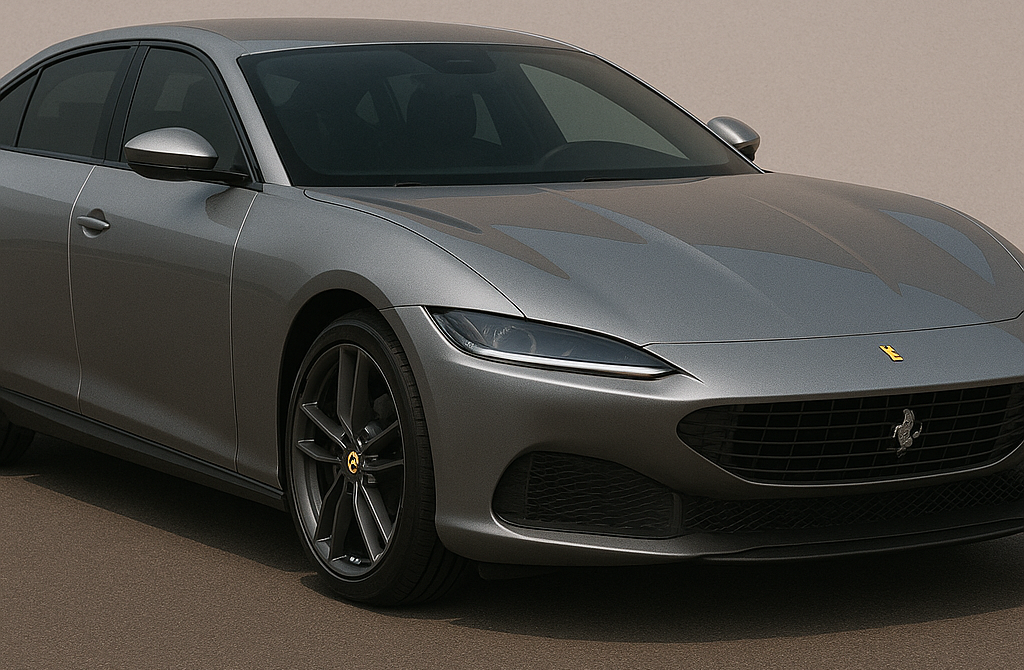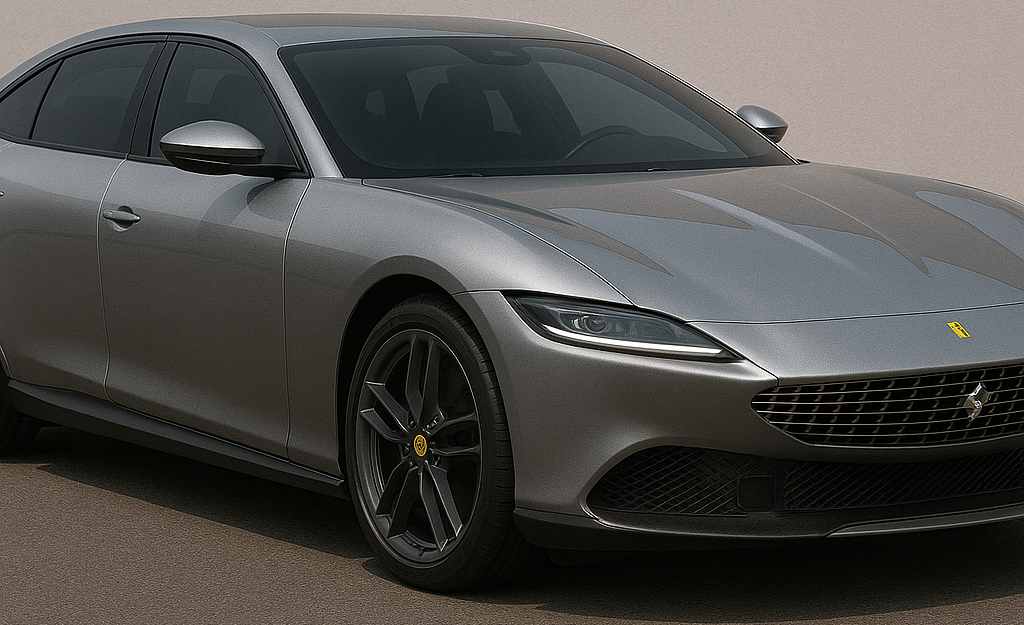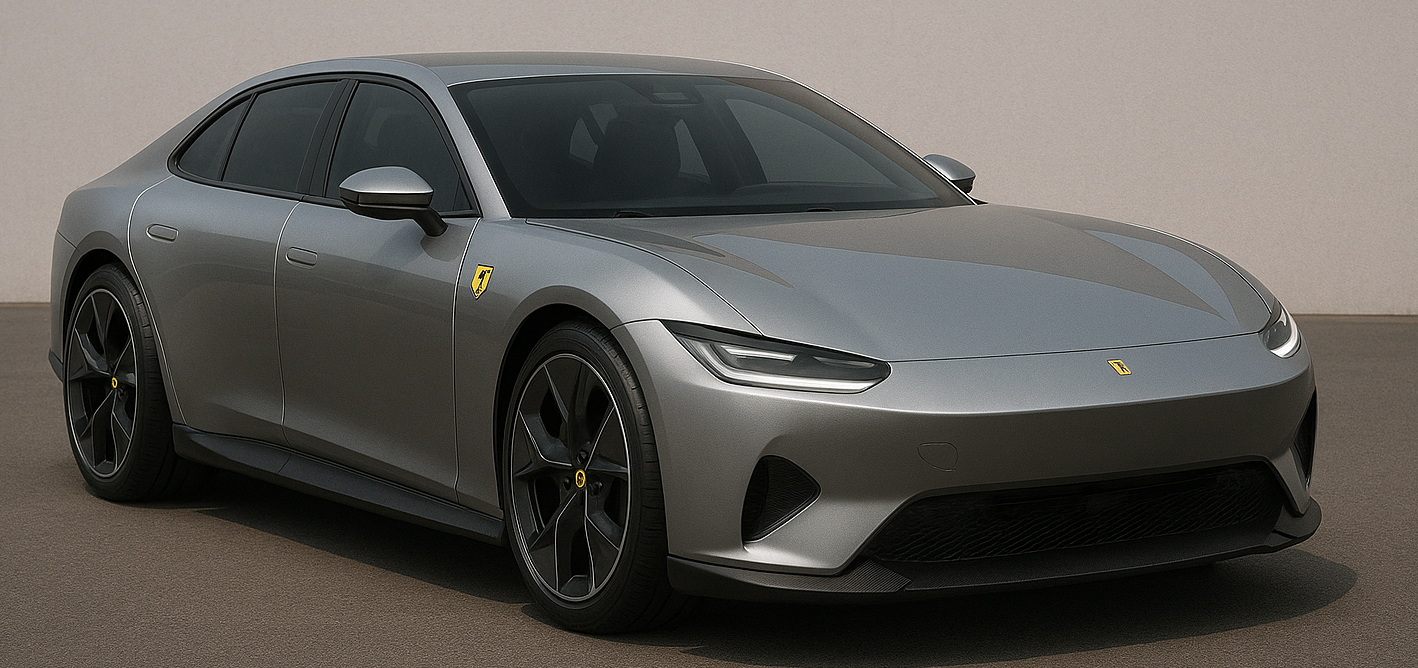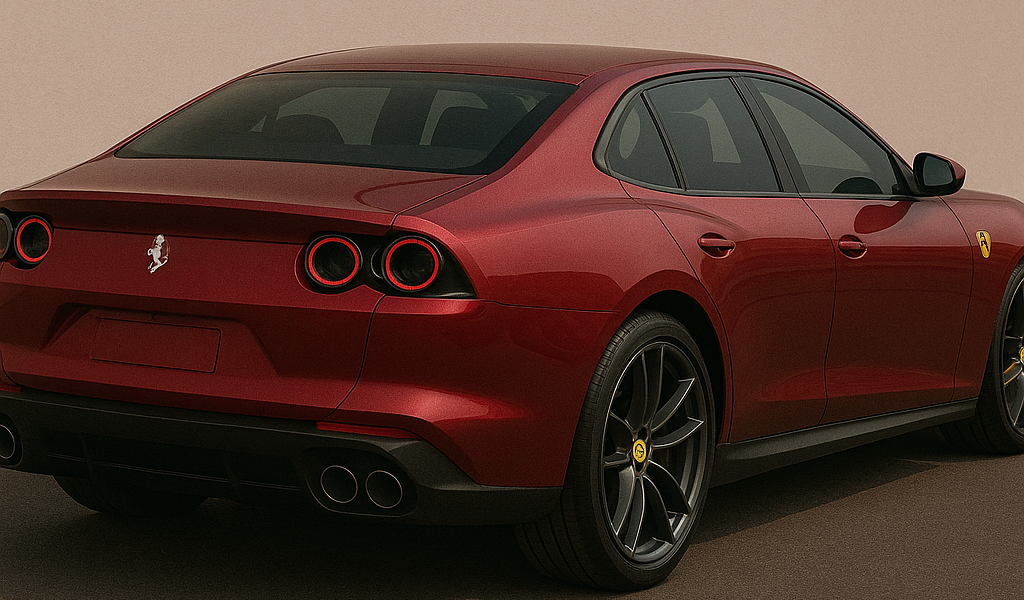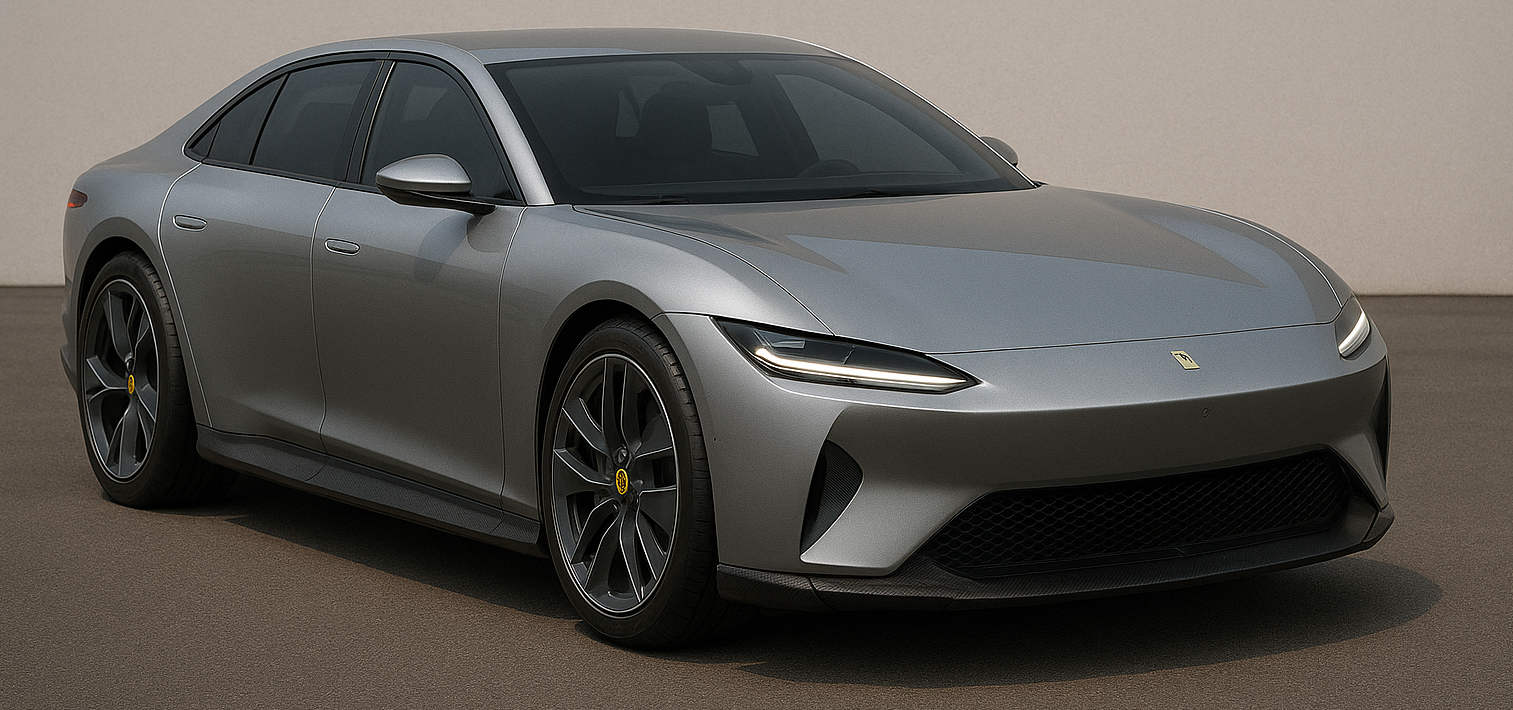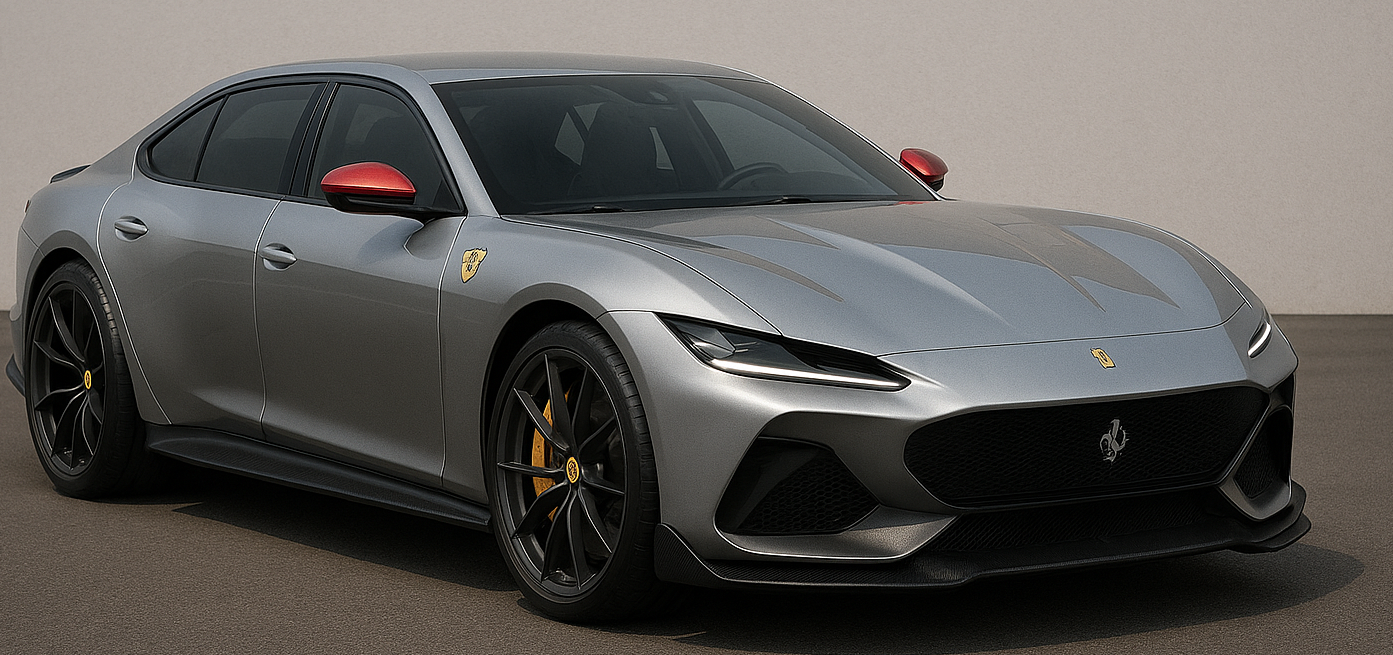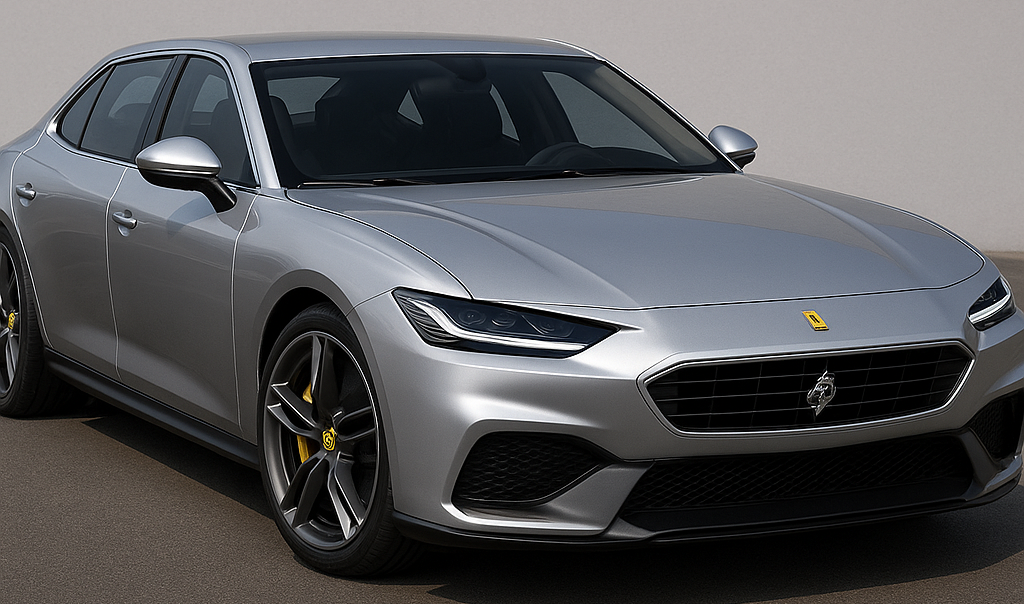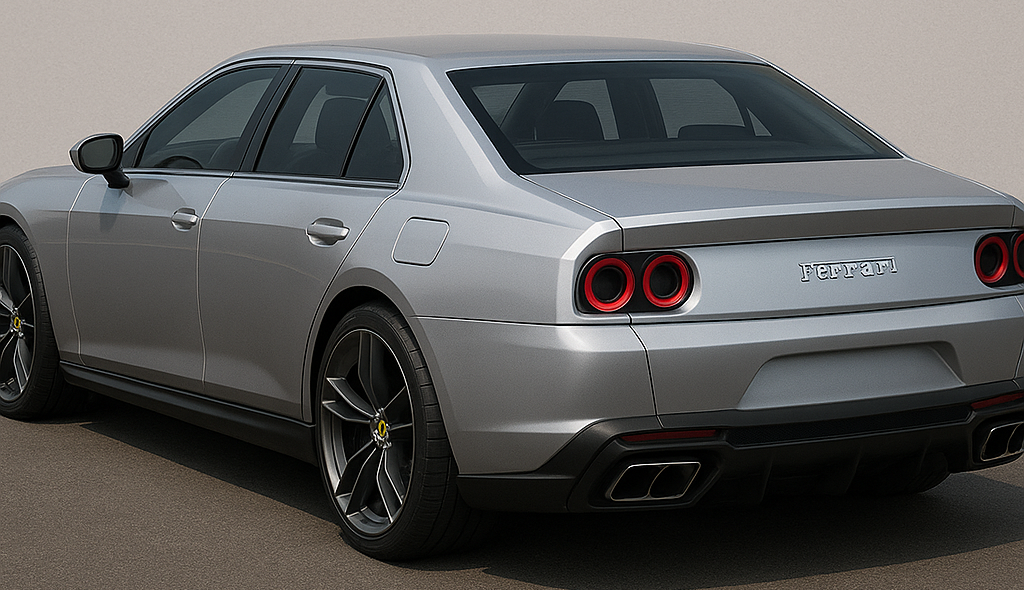
In the world of Ferrari, there are rules. Unwritten, but sacred: a Ferrari is a coupe or a roadster, no more than two seats, always driven by emotion—not compromise. But once, just once, those rules were challenged—by Ferrari itself. And from that quiet rebellion came the Ferrari Pinin: the only four-door Ferrari ever made, where power bowed to elegance.
The idea didn’t come from Maranello, but from the mind of Sergio Pininfarina, son of the legendary Battista “Pinin” Farina. In 1980, Sergio dreamed of more than just speed. He wanted to create a car that wore a suit like Armani, but carried the heart of a Ferrari.
To celebrate the 50th anniversary of the Pininfarina studio, the concept was born. Its name, “Pinin,” was a tribute to the founder himself. The project brought together some of Italy’s finest designers, including Leonardo Fioravanti, the man behind icons like the Ferrari Daytona and F40. But this time, he didn’t pursue aggression. He sculpted a gentleman’s Ferrari—restrained, refined, and quietly powerful.
The Ferrari Pinin wasn’t just different—it was an anti-Ferrari, and yet, it embodied Ferrari’s soul in every curve. It challenged tradition in the most elegant way possible. Design students still study its silhouette as a masterclass in formal luxury blended with sporting DNA.
Though it never reached production, the Pinin became a symbol—a vision of what Ferrari could have been. A more mature, more composed Ferrari… perhaps even more striking in its silence.
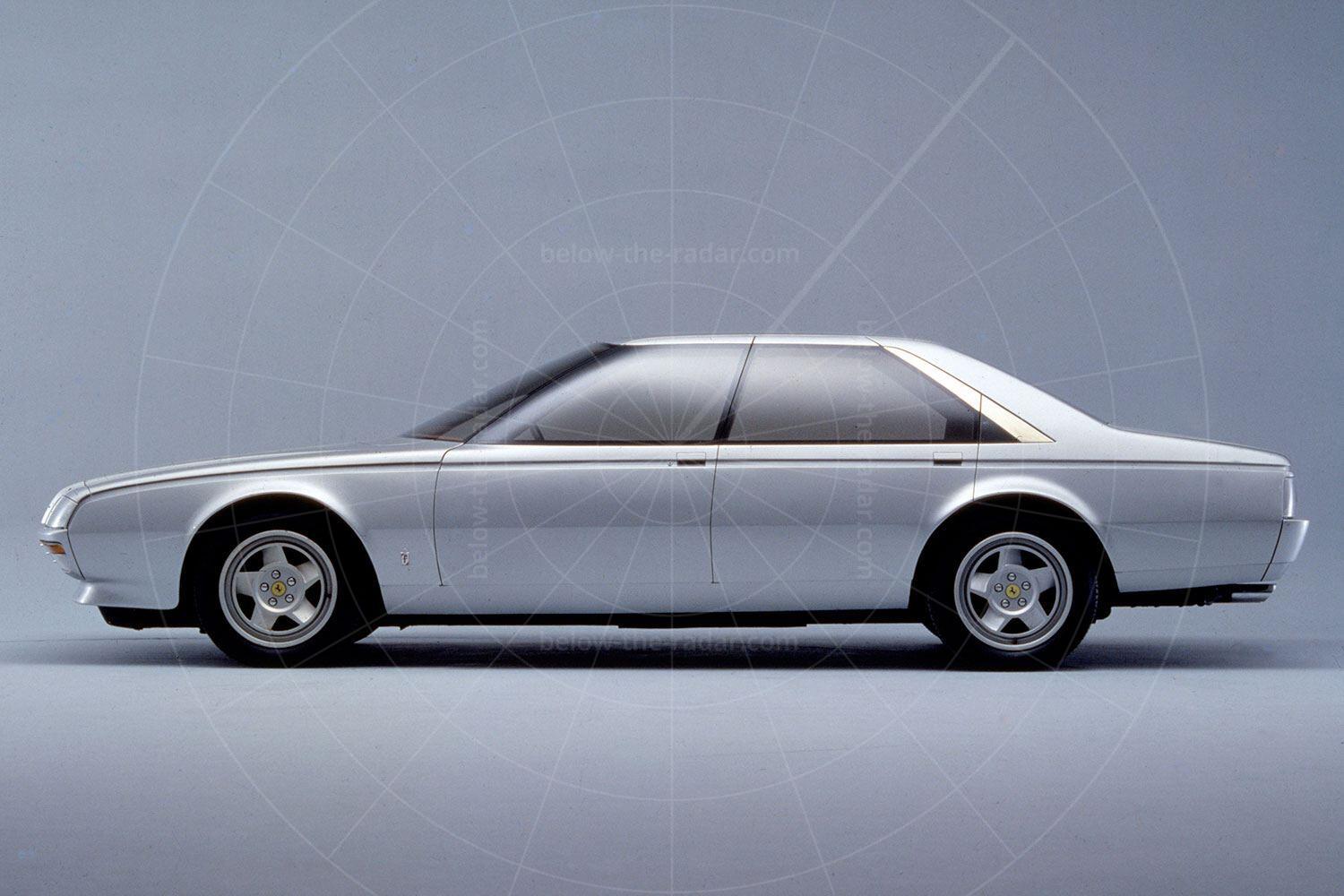
Ferrari Pinin specs: 1. Power 5.0-litre V12 engine, 280 hp 2. Acceleration 0-100 km/h in 6.0 seconds 3. Top Speed 250 km/h 4. Engine 5.0-litre V12 5. Range 400-450 km (estimated) 6. Dimensions
-
Length: 4.57 m
-
Width: 1.85 m
-
Height: 1.28 m
-
Wheelbase: 2.75 m
7. Technology
-
Air conditioning system
-
Electronic engine management
-
Integrated engine control system
8. Additional Features
-
Electric power steering
-
Leather interior
-
Wood elements in the cabin
-
Premium audio system
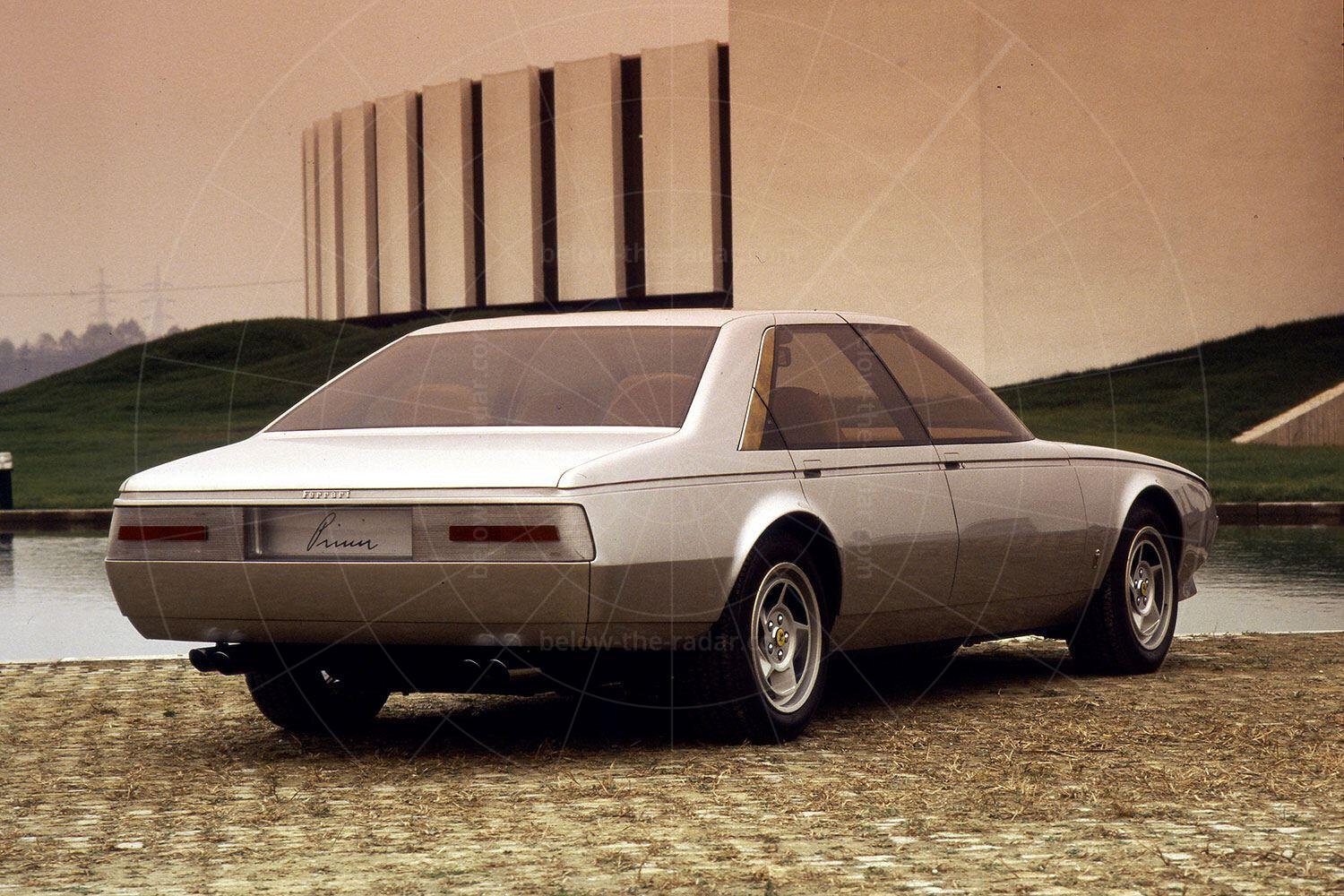
Intriguing facts about the Ferrari Pinin:
- Distinctive Design by Fioravanti: The Ferrari Pinin was designed by Leonardo Fioravanti, who also worked on iconic models like the Ferrari 365 GTB/4 Daytona and Ferrari F40. He aimed to create a car that combined elegance with power, and developed unique features such as smooth lines, characteristic of classic sports cars, but with more refined proportions.
- Art of Material Use: During the development of the Pinin, advanced materials were used, including lightweight metals and high-quality glass, to add not only elegance but also high aerodynamic efficiency. This helped maintain high speed and performance, even with the unconventional design.
- Perfectly Balanced Proportions: The Pinin featured ideal proportions, taken from Ferrari’s classic sports models. The designers wanted to create a car that looked as good in motion as it did stationary. Even today, the Pinin’s design still looks modern and stylish.
- A Dream That Never Came True: The Pinin could have become Ferrari’s symbol in a new class of luxurious supercars, but due to its innovation and unconventional design, the concept never made it to production. In a way, it remains a vision of what Ferrari could have been if they had decided to focus more on luxury and comfort.
- Secrets in the Details: Although the Pinin was a Ferrari project, many of its details remained somewhat hidden from the public. For example, its front end was designed to provide maximum aerodynamic efficiency with minimal changes to the design.
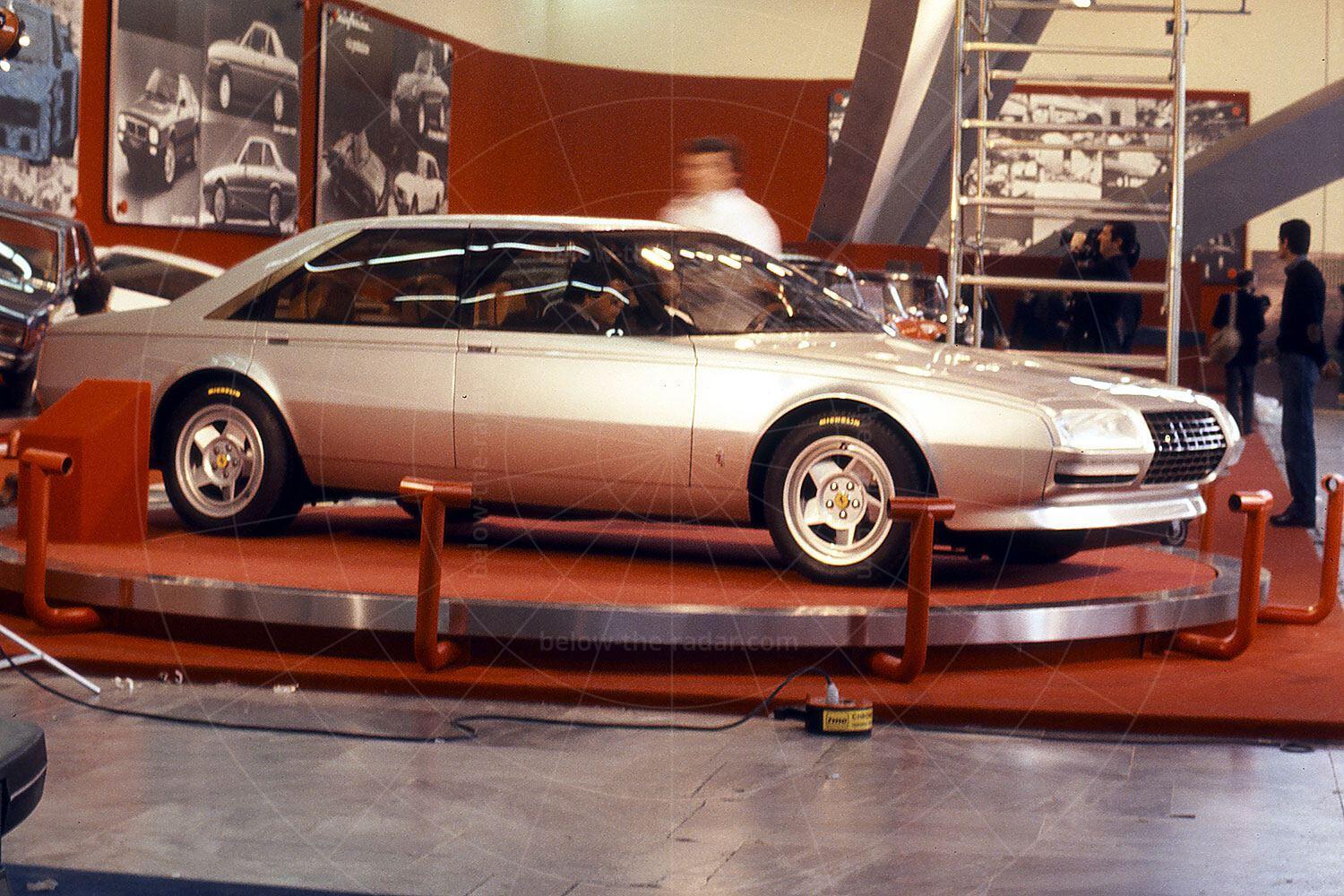
Pinin’s Design Through the Years: A Timeless Masterpiece
When Ferrari Pinin was first introduced, it was hailed as a revolutionary design, breaking away from traditional Ferrari norms. Designed by Leonardo Fioravanti and created to celebrate the 50th anniversary of Pininfarina, this four-door concept car was ahead of its time. However, what makes its design even more remarkable is how it has aged over the years.
Timeless Elegance and Modern Appeal
Looking at the Pinin today, it’s clear that the design was meant to be more than just futuristic for its time. Unlike many cars of its era, Pinin never felt too “in the moment,” which has allowed it to remain relevant and modern-looking. Its long, flowing lines, minimalistic but sculpted surfaces, and refined proportions still strike a perfect balance between sleekness and elegance.
Innovative Proportions and Aerodynamic Form
The car’s proportions, such as its slightly elongated body and sculptural curves, were groundbreaking. While many cars of the 1970s had a boxier, more angular design, Pinin took an opposite approach by incorporating softer, more fluid shapes. This made the Pinin stand out as both sporty and luxurious. Its design isn’t overly aggressive, yet still communicates strength and speed. The result? A vehicle that still holds a strong aesthetic appeal even decades later.
Modern Minimalism
Fast forward to the present, and the Ferrari Pinin could easily be mistaken for a concept car designed in the last decade. The clean lines and smooth surface treatment, which were once considered radical, have now become a major trend in contemporary automotive design. The simple yet refined front end, smooth integration of headlights, and use of glass in the cabin show how advanced the thinking was behind its design.
A Classic Blend of Luxury and Performance
One of the enduring aspects of the Pinin is its ability to combine both luxurious details and the performance heritage Ferrari is known for. From the iconic Pininfarina-styled front grille to the elegant leather and wood finishes in the cabin, it strikes a perfect balance between comfort and the thrill of driving. Today’s sports sedans and high-performance vehicles often borrow elements from this classic design.
A Lasting Legacy in Ferrari’s Future Designs
Despite never being put into production, Ferrari Pinin set a new benchmark for design at Ferrari. Elements of its clean, fluid lines can be seen in later models such as the Ferrari GTC4 Lusso and even in modern Ferrari road cars, which continue to push the boundaries of sports car design while maintaining the brand’s iconic elegance. The Ferrari Pinin remains a timeless design, a vision of what Ferrari’s future could have been, and continues to influence the automotive industry as a whole.
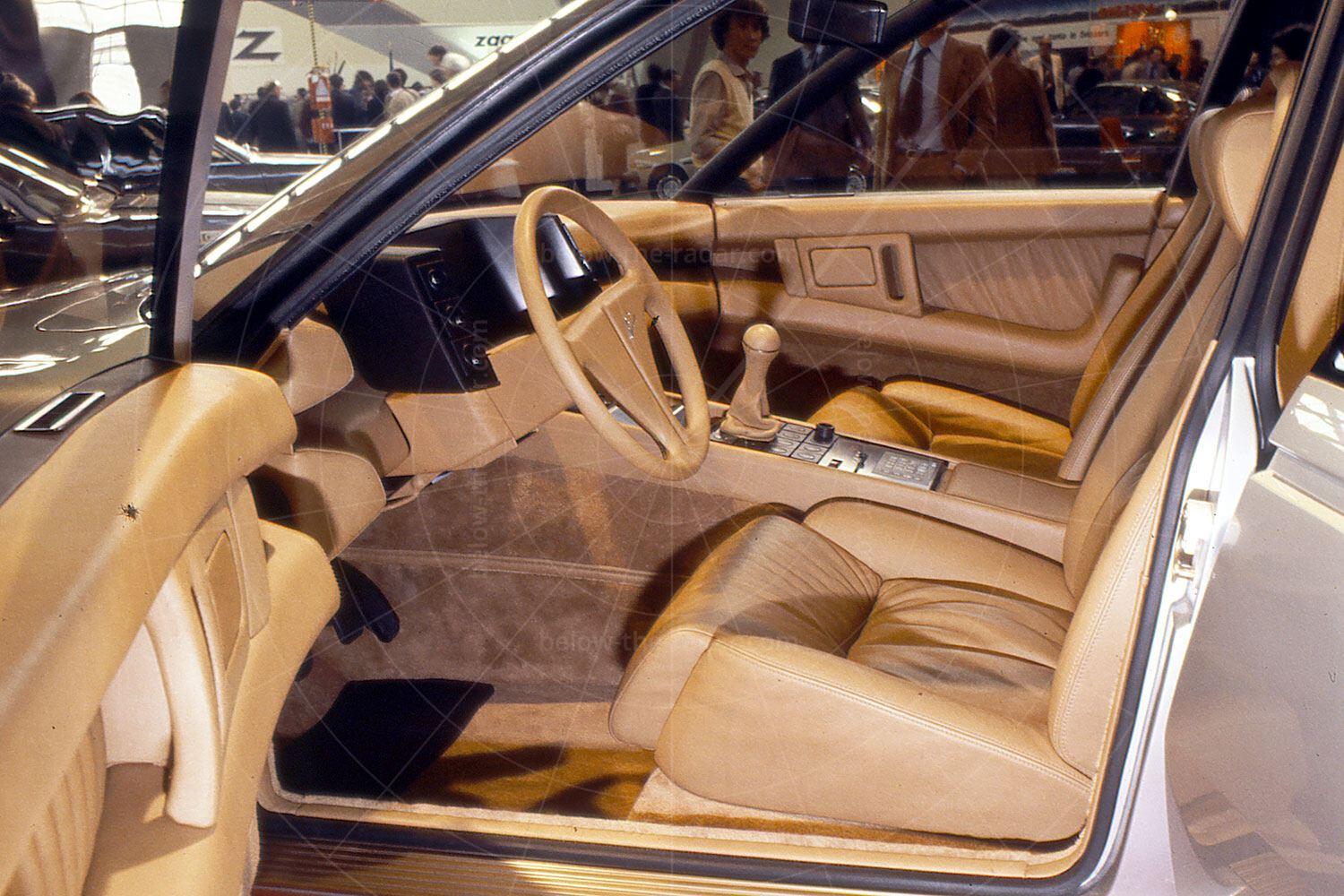
Conclusion
The Ferrari Pinin stands as a testament to the timeless brilliance of automotive design. Even though it was conceived as a concept and never saw production, its design remains influential in the world of luxury and performance cars. The elegant proportions, forward-thinking aerodynamics, and attention to detail have ensured that the Pinin continues to captivate automotive enthusiasts and designers alike.
Looking back at its design through the years, the Pinin proves that great design transcends time. Its minimalism, fluid lines, and luxurious touches are not only a reflection of the era it was born in but also a glimpse into the future of Ferrari. The Pinin’s influence is still visible in Ferrari’s later models and in the broader automotive industry.
Ultimately, the Ferrari Pinin remains an iconic vision of what could have been—a symbol of innovation, elegance, and Ferrari’s commitment to pushing the boundaries of what a car can be. Its design continues to be a source of inspiration, ensuring that its legacy lives on.
New version of Ferrari Pinin:
Future Classics: 9/10
Brand Recognition: 8/10
Design Modernity: 9/10
CarsCorn Score: 8.7/10
